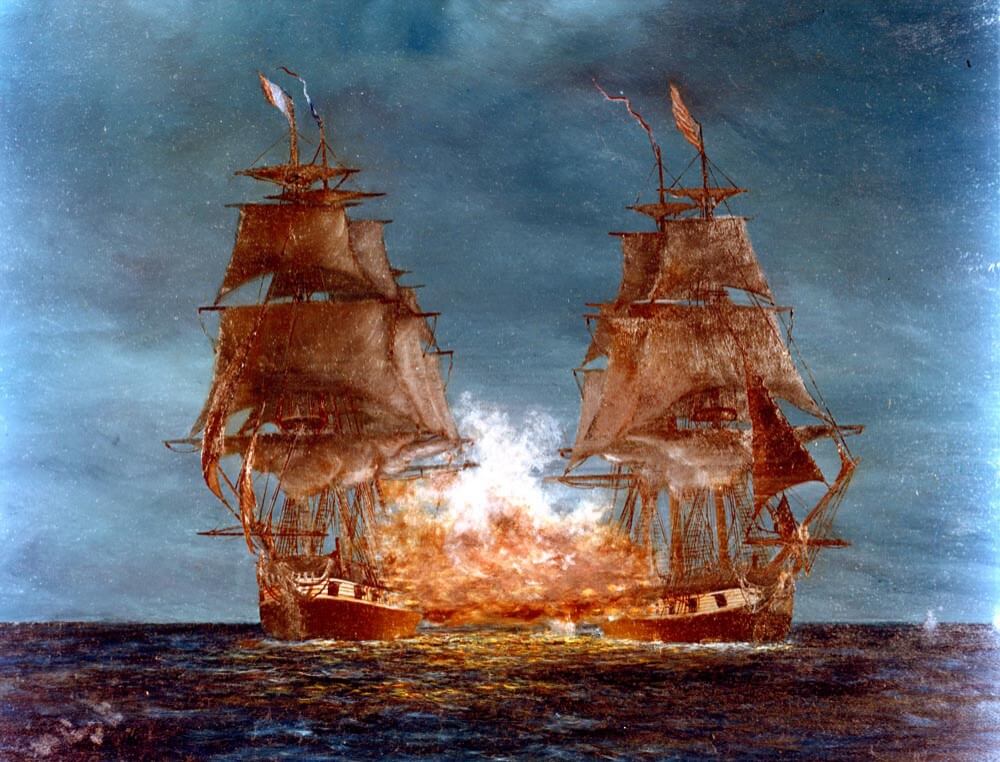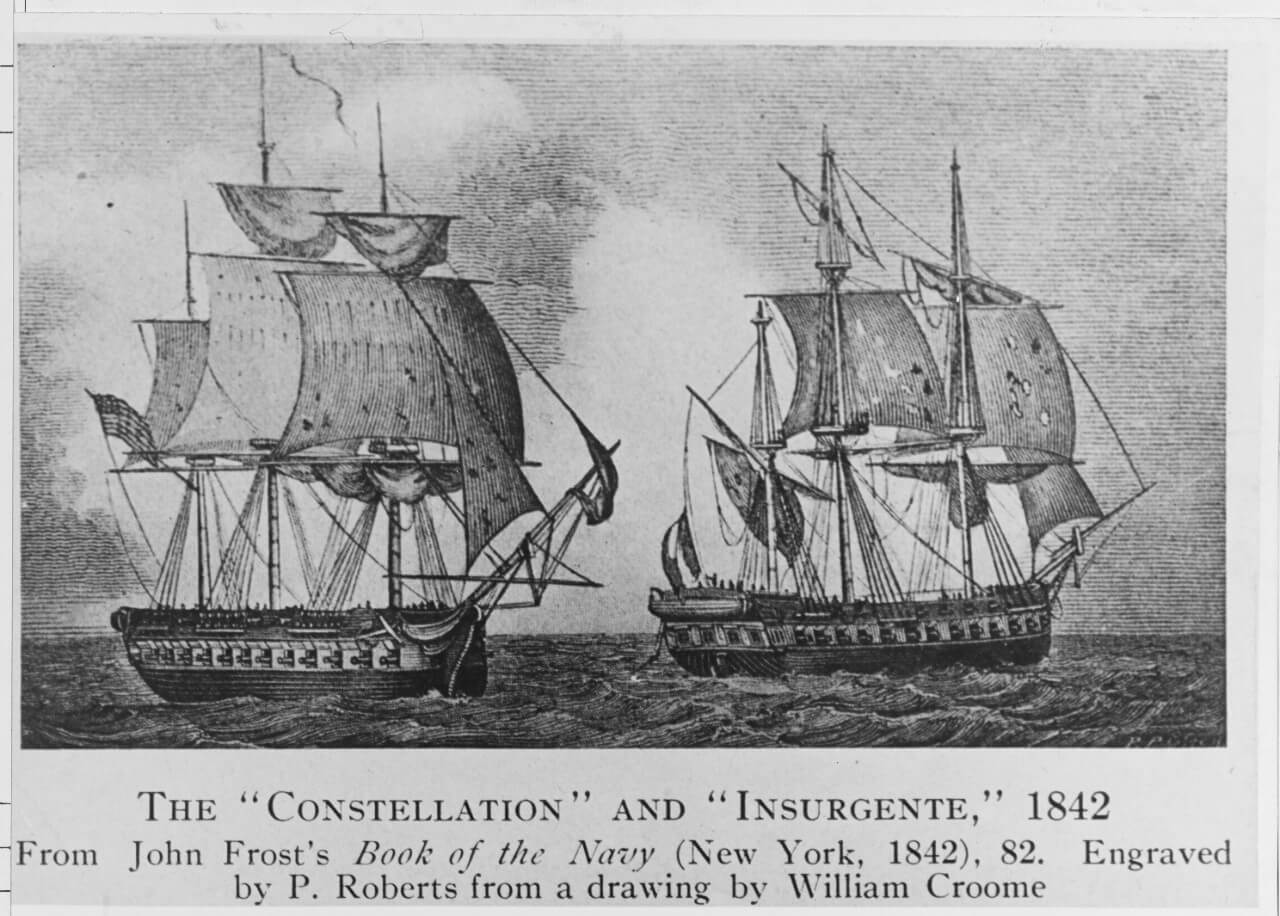 Joshua Humphreys (1751 - 1838) is often called “The Father of the American Navy” for his contributions to naval architecture and shipbuilding during and after the Revolutionary War.
Joshua Humphreys (1751 - 1838) is often called “The Father of the American Navy” for his contributions to naval architecture and shipbuilding during and after the Revolutionary War.
When Congress passed the Naval Act of 1794, Humphreys was appointed Naval Constructor and began work on what would become the beginnings of the United States Navy. The federal government commissioned Humphreys to build a naval fleet to protect the new country from pirates and other attacks to rival the navies of European countries in quality.
The first of the new ships that would make up the beginnings of the U.S. Navy, United States, was built by Humphreys in Philadelphia and launched on May 10, 1797. He built six frigates in total: United States, Constitution, President, Chesapeake, Constellation, and Congress. These vessels were larger and faster than other ships of their class and formed the core of the U.S. Navy during the War of 1812, scoring several victories against their British counterparts.
- Joshua Humphreys was born on June 17, 1951, in Haverford, Pennsylvania, to Joshua Humphreys, Sr. and Sarah Williams Humphreys, who owned large amounts of land in Delaware County, Pennsylvania.
- His brother, Charles Humphreys, became a member of the Continental Congress.
- As a youth, he was apprenticed to a shipbuilder in Philadelphia, Pennsylvania, and after the death of the master, he was given control of the shipyard.
- He married Mary Davids in 1776 and had 11 children.
- His son Samuel was also a naval architect.
- He died on January 12, 1838. Two ships are named in his • honor: USS Humphreys and USNS Joshua Humphreys.
Humphreys had two criteria to satisfy when he designed the new ships: to out-gun the next rate ship, and to out-sail adversaries. The successful integration of the two design criteria demanded an innovated technical solution to the problems of strength of materials and hull design. The result was a never-been-built before design.
The fine entry and run required for sailing qualities and the weight of a heavy armament caused particular problems for wooden hull sailing ships. Combining the weight of the guns and the buoyancy curve of a fast sailing hull resulted in a force that distorts the hull. The distortion, known as “hogging” (named as such because the curve resembles that of a hog’s back), is the bending along the length of the keel.
 With minimal buoyancy, the ends of the ship tended to drop down under the weight loads of the guns, while the center midbody, being more buoyant, rose upward. Humphreys was the first to recognize the need to stiffen the hull to resist the forces causing hogging.
With minimal buoyancy, the ends of the ship tended to drop down under the weight loads of the guns, while the center midbody, being more buoyant, rose upward. Humphreys was the first to recognize the need to stiffen the hull to resist the forces causing hogging.
By 1801, the government no longer needed a formal naval constructor, and Humphreys was given the task to build a shipyard for use by the Navy in Philadelphia. He began to participate politically in the city as well, and became a very successful businessman.
His role as “The Father of the American Navy” was invaluable to the success of the new country. His lasting legacy is evident by the fact that one of his first ships as part of the Naval Act of 1794, Constitution (Old Ironside), is still afloat.
Additional Resources